First record of Neoerysiphe cumminsiana on horseweed in India
P. Baiswar A B , S. Chandra A and S. V. Ngachan AA ICAR Research Complex for NEH Region, Umiam, Meghalaya 793103, India.
B Corresponding author. Email: pbaiswar@yahoo.com
Australasian Plant Disease Notes 3(1) 156-157 https://doi.org/10.1071/DN08060
Submitted: 23 June 2008 Accepted: 10 November 2008 Published: 20 November 2008
Abstract
In March 2008, a severe outbreak of powdery mildew disease was observed on horseweed (Conyza canadensis = Erigeron canadensis). Based on the morphological characters, the pathogen was identified as the anamorph of Neoerysiphe cumminsiana. This is the first report of this organism causing powdery mildew on C. canadensis in Meghalaya, India.
Horseweed (Conyza canadensis) belongs to the family Asteraceae. It is native to North America (USA and Canada) but spread to Europe and later to Asia and Australia (Michael 1977). In India it is known as Jarayupriya. Conyza canadensis occurs as a weed in a wide range of crops, annual and perennial, especially where tillage is less intensive. It has been introduced internationally as a contaminant of cereals, forage seeds and cotton, and there is a risk of further similar introduction. It has been recorded as an alternate host of Tomato bushy stunt virus (Grbelja et al. 1988), fungal pathogens such as Sclerotinia minor, also aster yellows phytoplasma, and a range of insect pests (Weaver 2001). There are few estimates of its competitive effect, but in Romania yield reductions of 64% have been recorded in sugar beet (Sarpe and Torge 1980).
During March 2008, a severe outbreak of powdery mildew on Conyza canadensis was observed in Barapani, Meghalaya, India. Disease symptoms included grayish white irregular patches consisting of epiphytic mycelia and conidia on both surfaces of the leaves. Symptoms were more severe on lower surface of the leaves (Fig. 1). Both older and younger leaves were equally susceptible. Symptoms were also present on stems. Infected leaves later turned necrotic. Voucher specimen has been deposited in Martin-Luther-Universität, Institut für Biologie, Bereich Geobotanik, Herbarium, Germany (HAL 2240 F.).
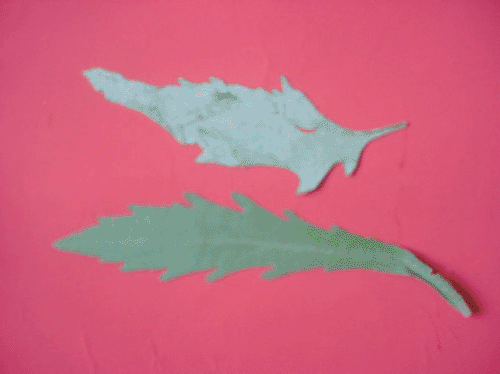
|
Conidia were harvested by dislodging them from infected tissue onto a strip of clear tape, using a camelhair brush. The tapes were mounted on microscope slides (Correll et al. 1987). Hyphae were up to 5–6 μm wide with multilobed appressoria (Fig. 2). Conidiophores were mostly erect with foot cells 22–34 × 8–17 µm, followed by 2–3 short cells. Conidia were cylindrical 32–37 × 17–22 µm and produced in chains (Figs 3 and 4). Fibrosin bodies were absent. Shoulder germination of conidia was also observed. Appressoria on germination tubes were lobed (Fig. 5). Based on these morphological characters the pathogen was identified as the anamorph of Neoerysiphe cumminsiana (Braun et al. 2002). No perfect stage (chasmothecium) was found to be associated with this fungus. Pathogenicity was confirmed by dusting conidia on healthy plants of C. canadensis, non-inoculated plants served as control. Inoculated plants developed symptoms after 8 days whereas control plants remained healthy.
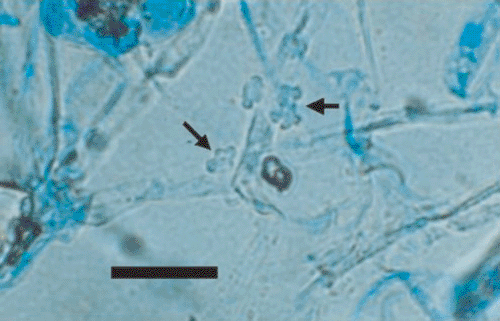
|
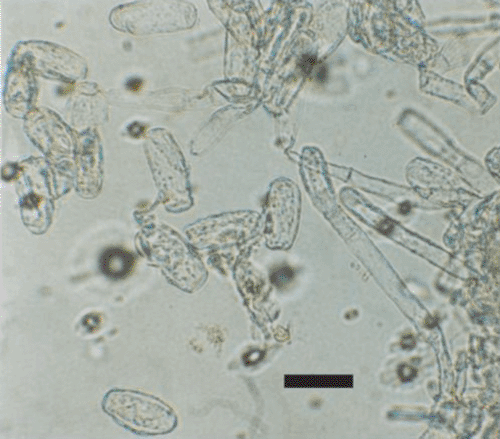
|
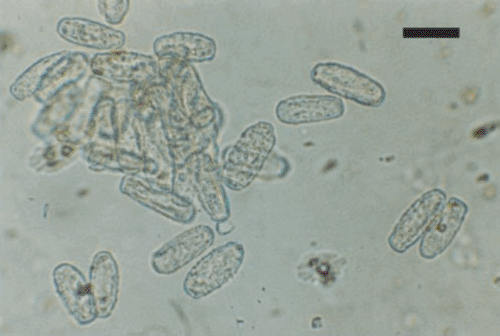
|
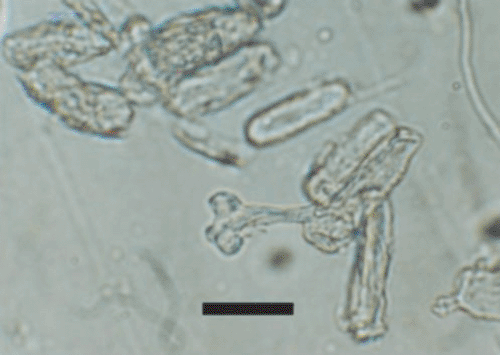
|
Earlier Podosphaera fusca has been reported on Conyza sp. from India (Ahmed et al. 2007). To our knowledge, this is the first record of powdery mildew of C. canadensis caused by anamorph of N. cumminsiana in India. An anamorph of N. cumminsiana has not been reported on any species of the genus Conyza from India. There is a possibility of involvement of this weed species as alternate host of powdery mildew pathogen infecting other plants.
Acknowledgements
The authors would like to thank Prof. Dr Uwe Braun for confirming the identity of the anamorph of Neoerysiphe cumminsiana. Authors are also grateful to Dr D.K. Hore for identification of the host and to Ms. Mariana Dkhar for providing the sample.
Correll JC,
Gordon TR, Elliott VJ
(1987) Host range, specificity and biometrical measurements of Leveillula taurica in California. Plant Disease 71, 248–251.
| Crossref | GoogleScholarGoogle Scholar |

Grbelja J,
Eric Z, Jeknic Z
(1988) Erigeron canadensis L. – a potential source of infection by the tomato bushy stunt virus for cultivated plants. Fragmenta Herbologica Jugoslavica 17, 95–99.

Sarpe N, Torge C
(1980) The effect of some weed associations with Sinapis, Setaria, Erigeron, Amaranthus, Cirsium and Convolvulus as the dominant genera on the root production of sugar-beet. Akademie der Landwirtschaftswissenschaften. Deutsche Demokratische Republik. Tagungsbericht 182, 105–112.

Weaver SE
(2001) The biology of Canadian weeds. Conyza canadensis. Canadian Journal of Plant Science 81, 867–875.



